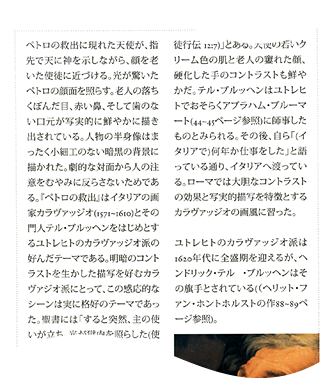Japanese Typesetting
Modern Japanese incorporates a mix of characters from three different writing systems—kanji, hiragana and katakana—each of which has a different origin and different design concept. In addition, these characters are frequently combined with Arabic numerals and the letters of the alphabet.
This means that, unlike typesetting done in Europe and North America that is based on a single alphabet, Japanese typesetting requires unique skills, knowledge and experience. To make the situation even more difficult, printed Japanese is usually fully justified. For text to be both attractive and readable, line breaks must be chosen carefully based on a set of complex rules and sentence meaning.
Despite designers’ great efforts to include beautiful illustrations and photos, much of the printed matter produced in Europe and North America for the Japanese market tends to have “messy” layouts due to poor quality typesetting. The example on the right is an excerpt from a brochure from a major European museum aimed at Japanese people. The layout includes many elements that should be avoided in Japanese typesetting, as they negatively affect both comprehension and the integrity of the design.

